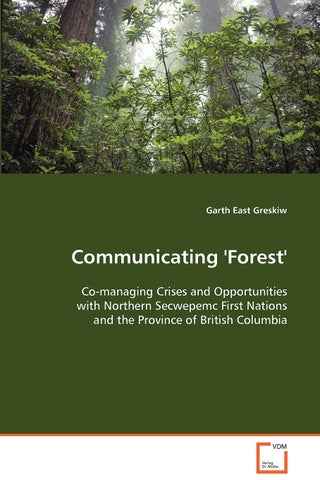| Book Description | Communication by speaking and listening and by sharing stories continues to be important for maintaining culture- but communication by reading and writing is the dominant method currently used by management authorities. There is little presently known about how the Province of British Columbia and First Nations can communicate so that acceptable co-management of forests can be achieved. Nevertheless, co-management is required as the method for resolving the Canadian constitutional conflict between First Nations' title and rights and the natural resources jurisdiction of the Province. Crises in forest management can create opportunities for cross-scale institutional improvement of co-management if First Nations and Provincial decision-making is shared in learning organizations. This project used the case study survey method for inquiry. Research findings indicated that there is potential for transformation of forest management in Northern Secwepemc territories in times of crises, however certain conditions, such as adequate staffing, funding and training, must first exist at the site level of management in order to make the best use of emergent opportunities for collaboration. |
Free & Easy Returns
Best Deals




